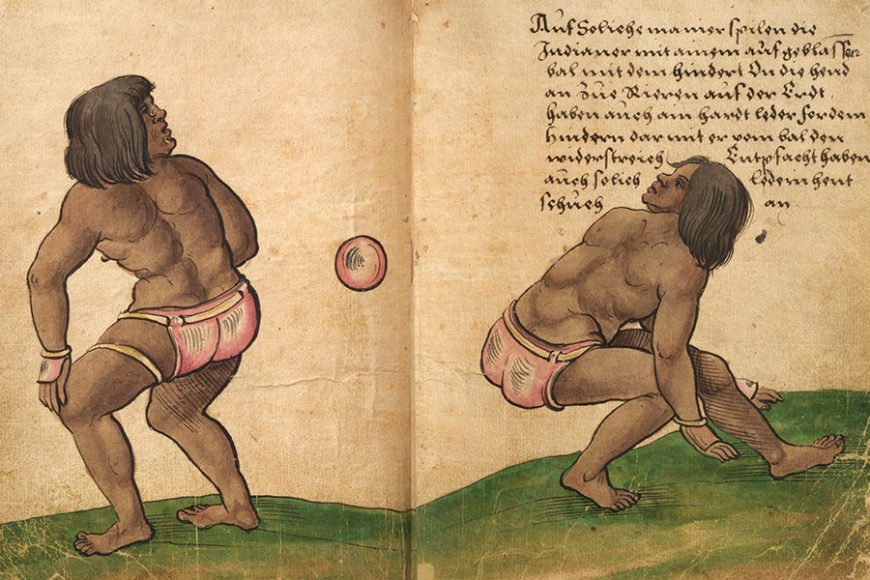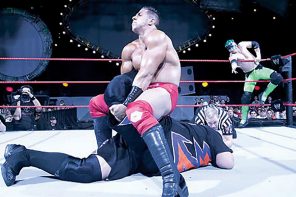The players faced off on an I-shaped ball court — two to four per team. Their objective — place a solid rubber ball (4 to 12 inches in diameter, 3 to 7½ pounds in weight) into an end zone or through a ring attached vertically high up on the court, the rules varying.
What remained consistent was the heavy padding the players wore around their hips in particular as they could only use their hips, shoulders and chest to maneuver the ball.
Equally consistent was the intensity of the matches, for the results determined not only bragging rights and wagers won but who should live or die, with the losers being sacrificed to the gods.
Though it may sound like something out of a Shirley Jackson horror story, the ballgame was played throughout Mesoamerica (Mexico and Central America) by the Olmecs and subsequently the Maya and the Aztecs, dating from at least 1400 B.C. Indeed, variations of it — minus the ritual decapitation — are still played in Mexico, where it is known as ulama, and Central America, where it is call Pok Ta Pok. In May, Belize’s Black Jaguars — “Ek’ Balam” in Mayan — played their way through nine teams from El Salvador, Guatemala, Honduras, Mexico and Panama to win the Pok Ta Pok World Championship in Salvador.)
By continuing the game, these teams are keeping faith with ancient civilizations, which did not see their blood sport merely as a way to sacrifice the vanquished. (The players were often captives of war.) Rather the game also explored Mesoamerica’s relationship with the cosmos. The Popol Vuh, a sacred Mayan text, tells in part the story of the Hero Twins, sons of the great ballplayer Hun Hunahpu, who was defeated and decapitated by the lords of the underworld, Xibalba.
The twins, Hunahpu and Xbalanque, traveled to the underworld to defeat the gods through many ballgames and trials, resurrecting their father and his brother, their uncle, before going off to rule the sun and the moon.
In death, Roberta H. and Peter T. Markman write in “The Flayed God: The Mythology of Mesoamerica” (Harper San Francisco, 1992), the losers of the ancient game were nonetheless beginning the hero’s journey.






